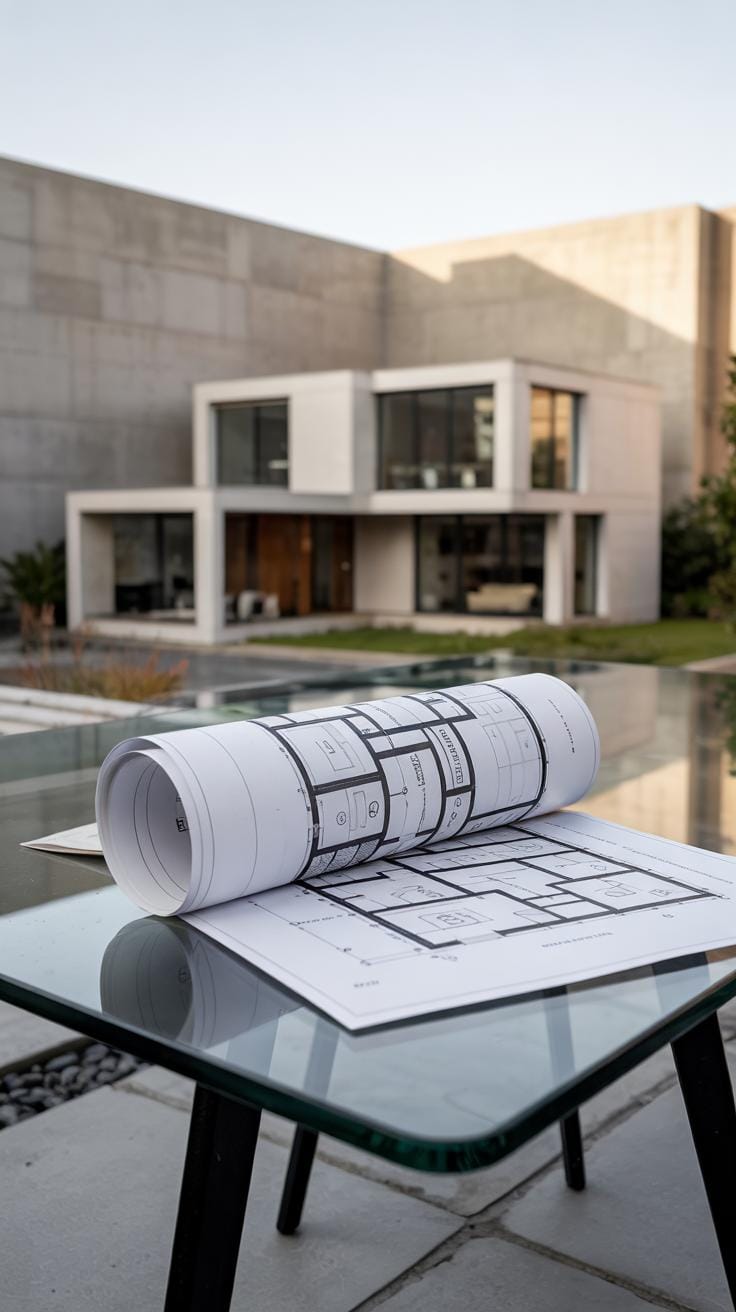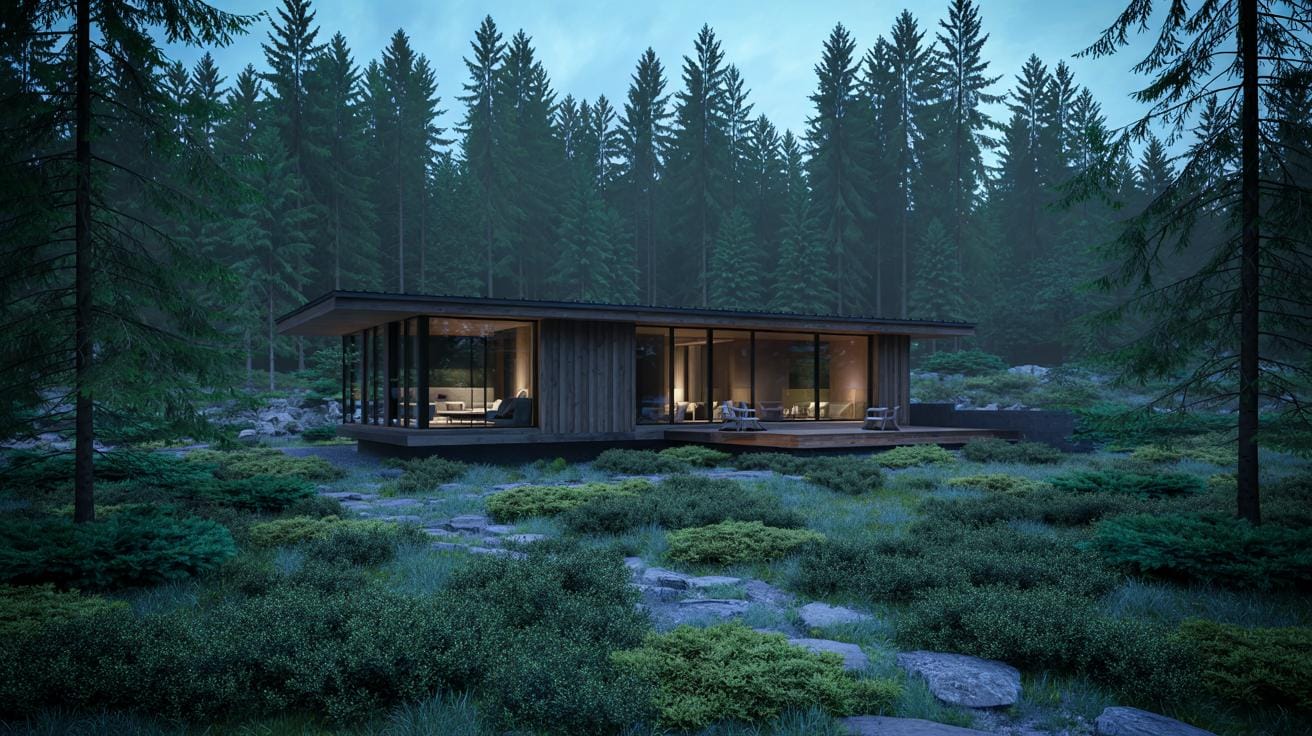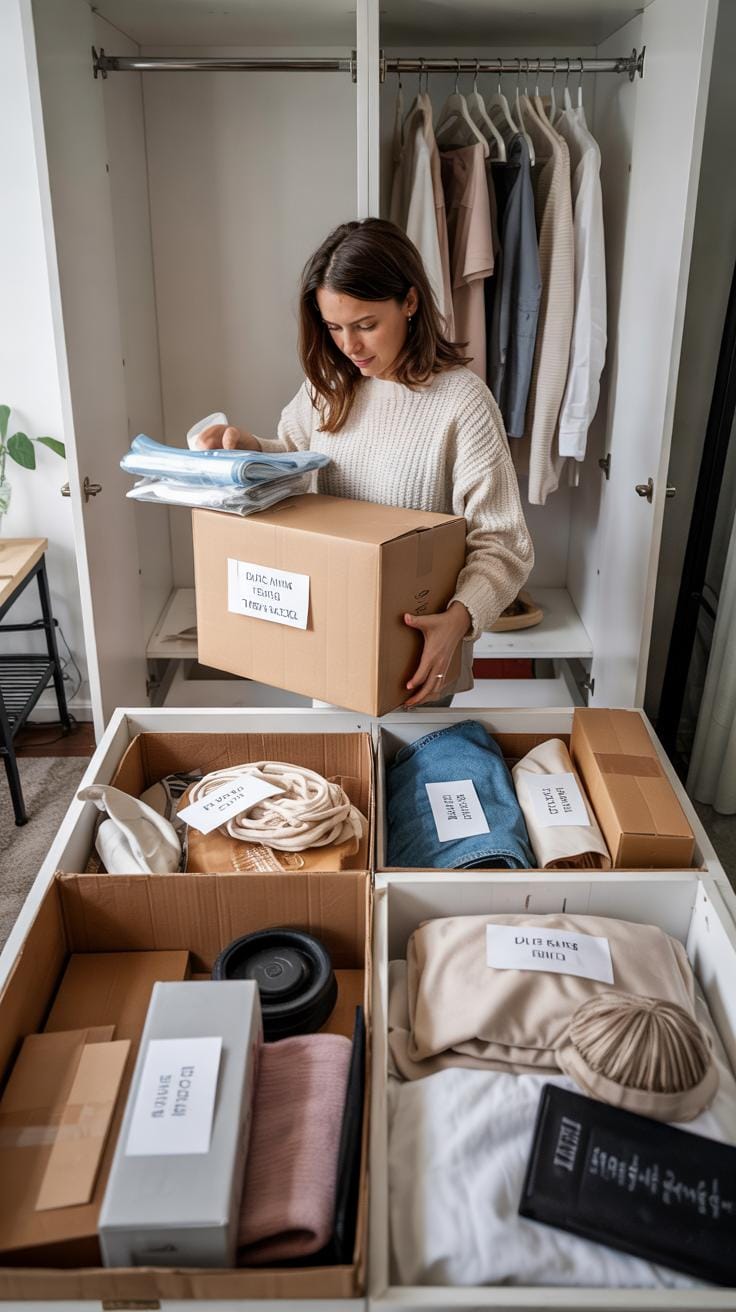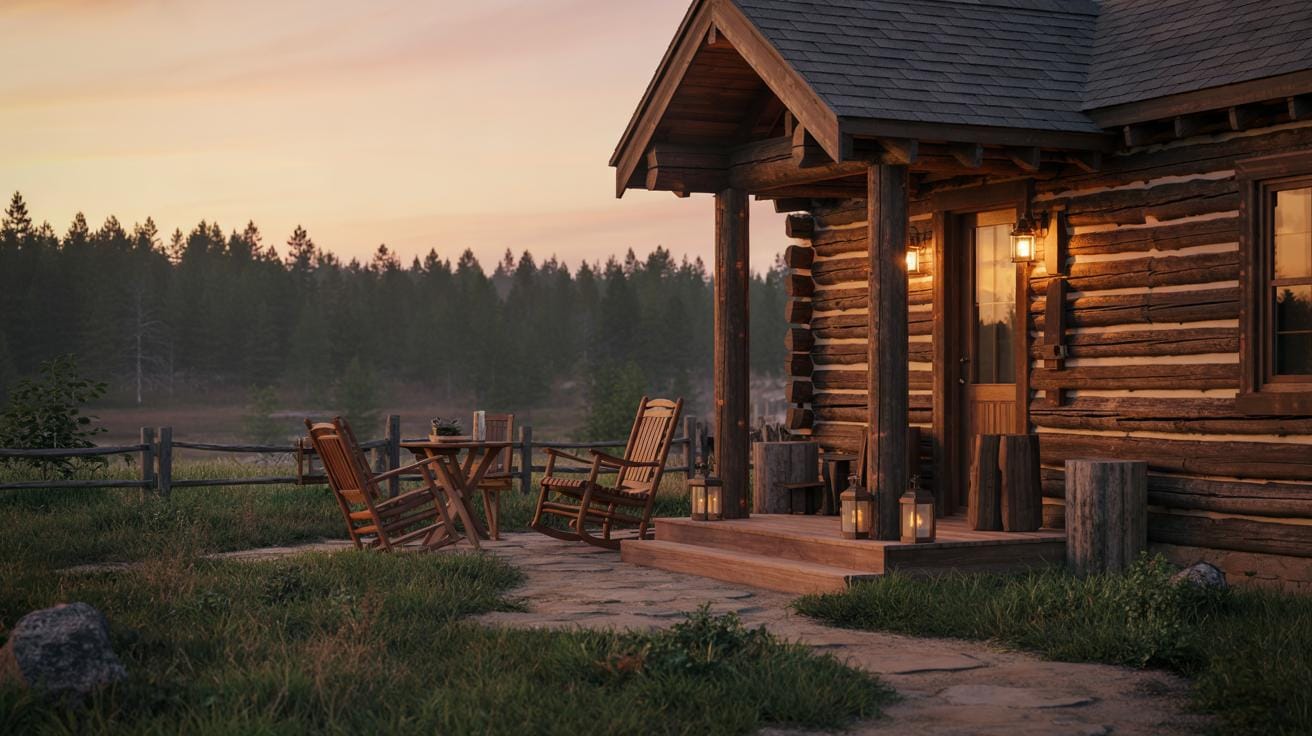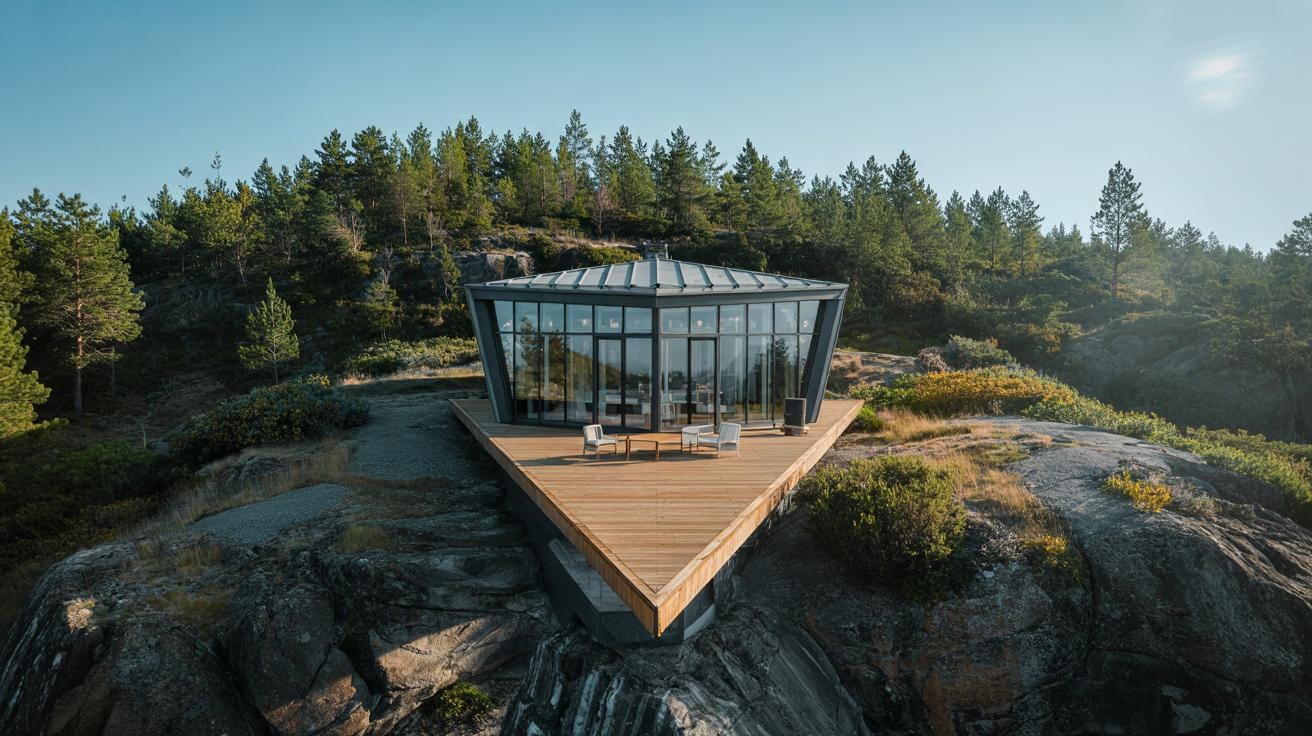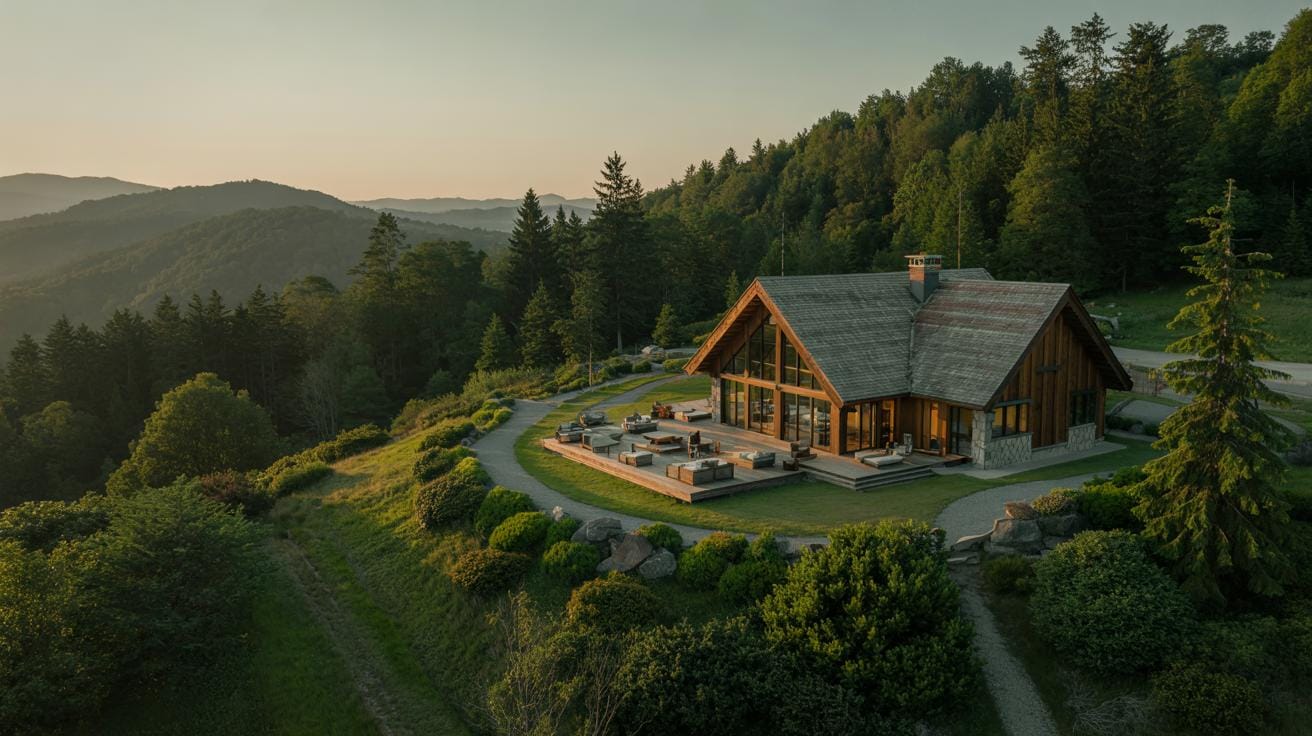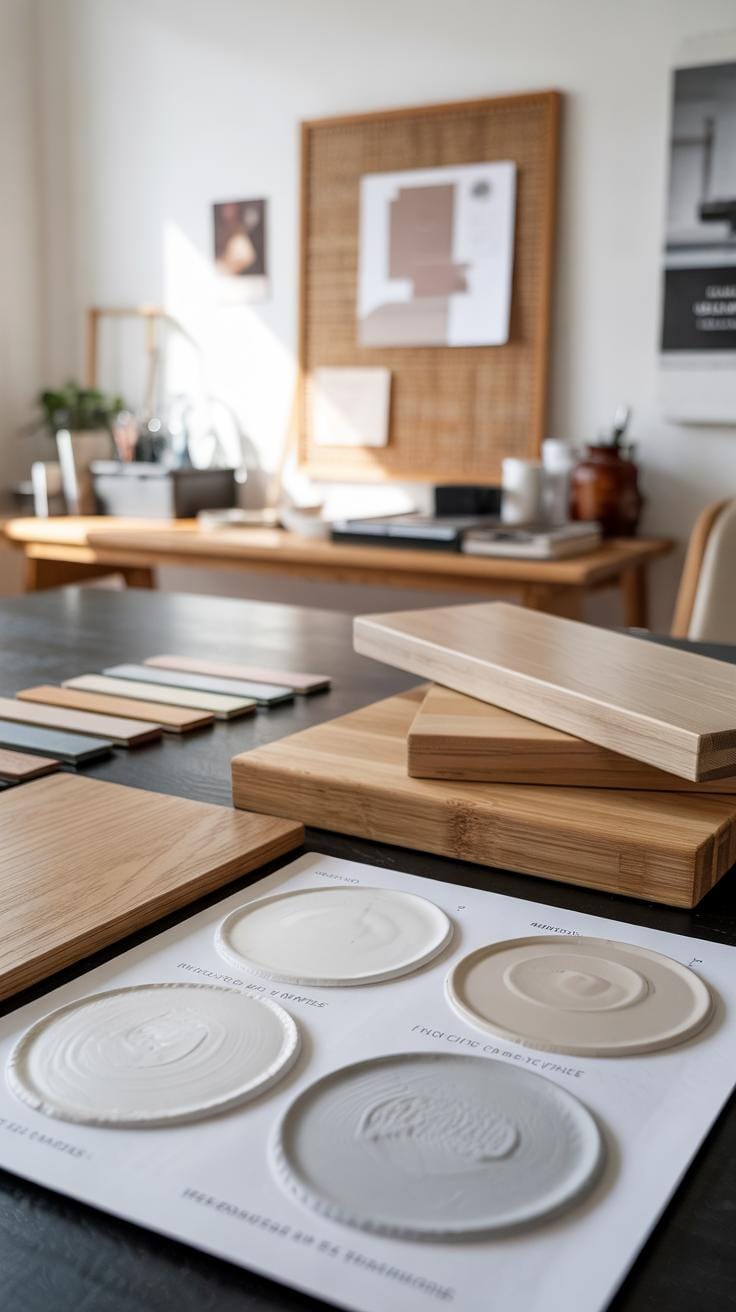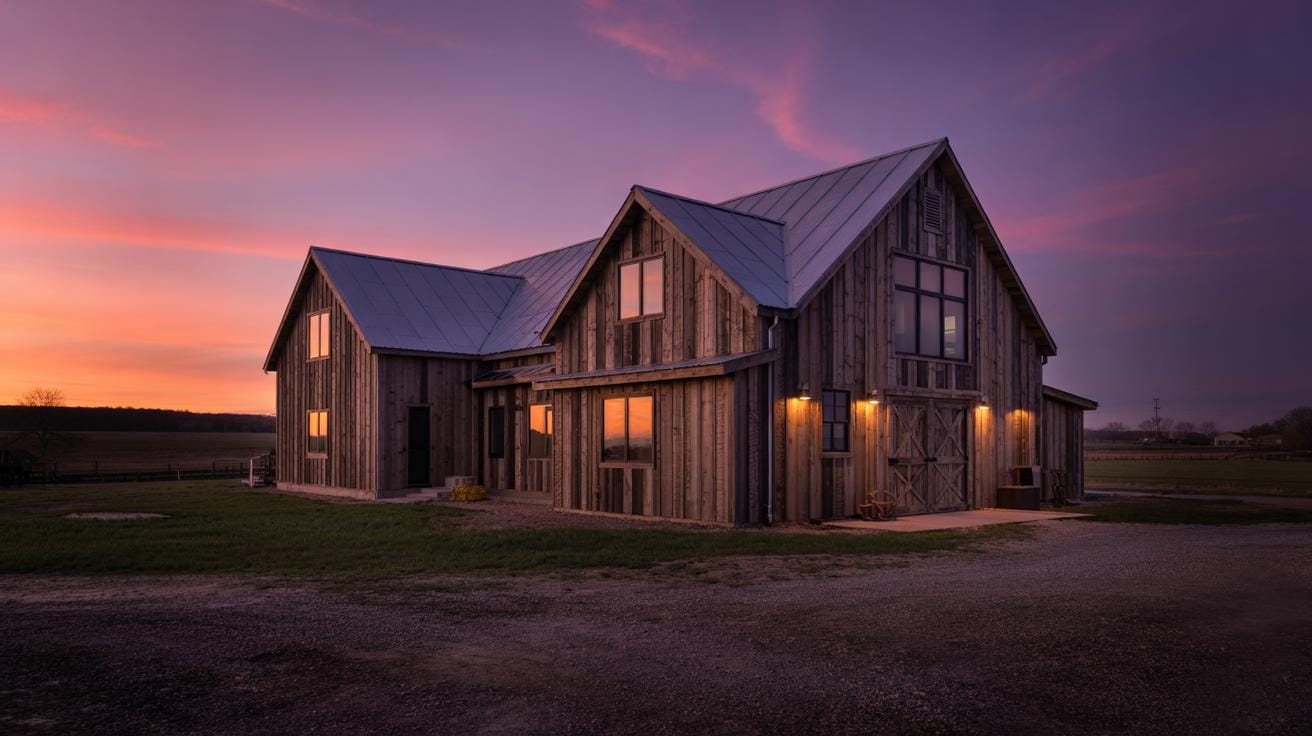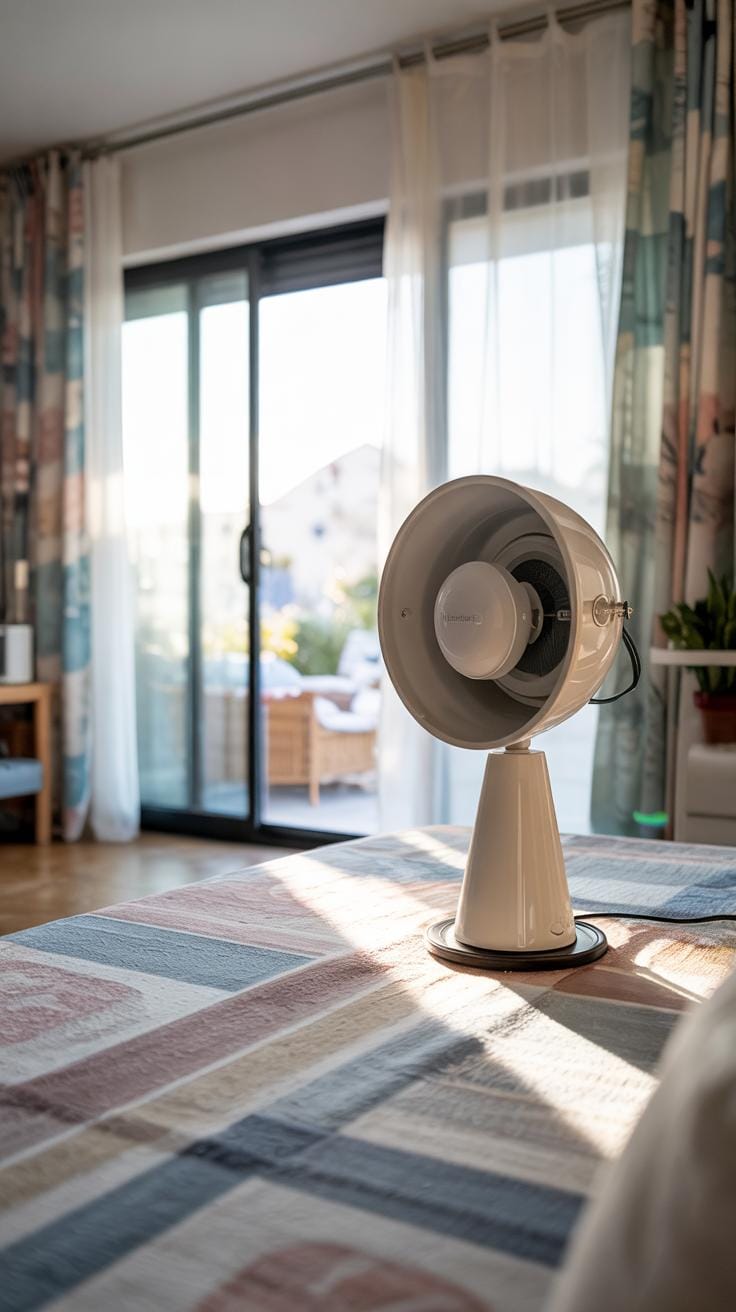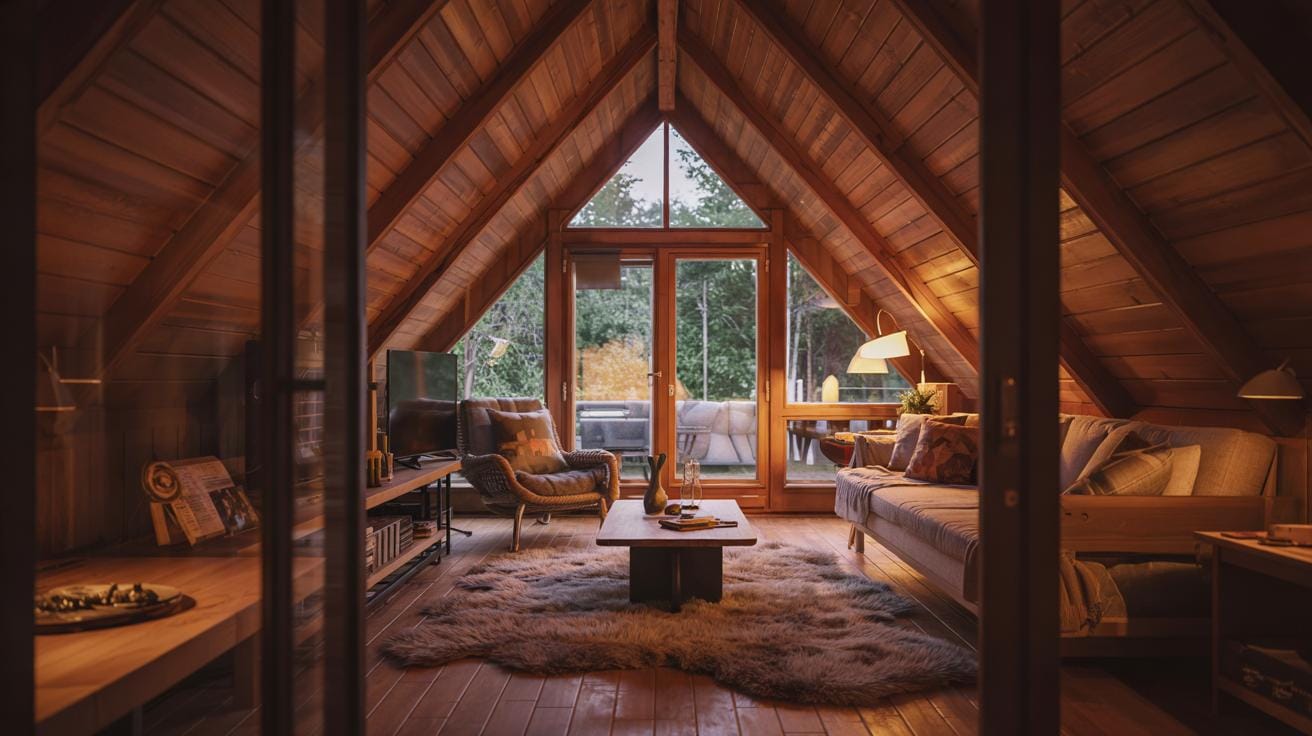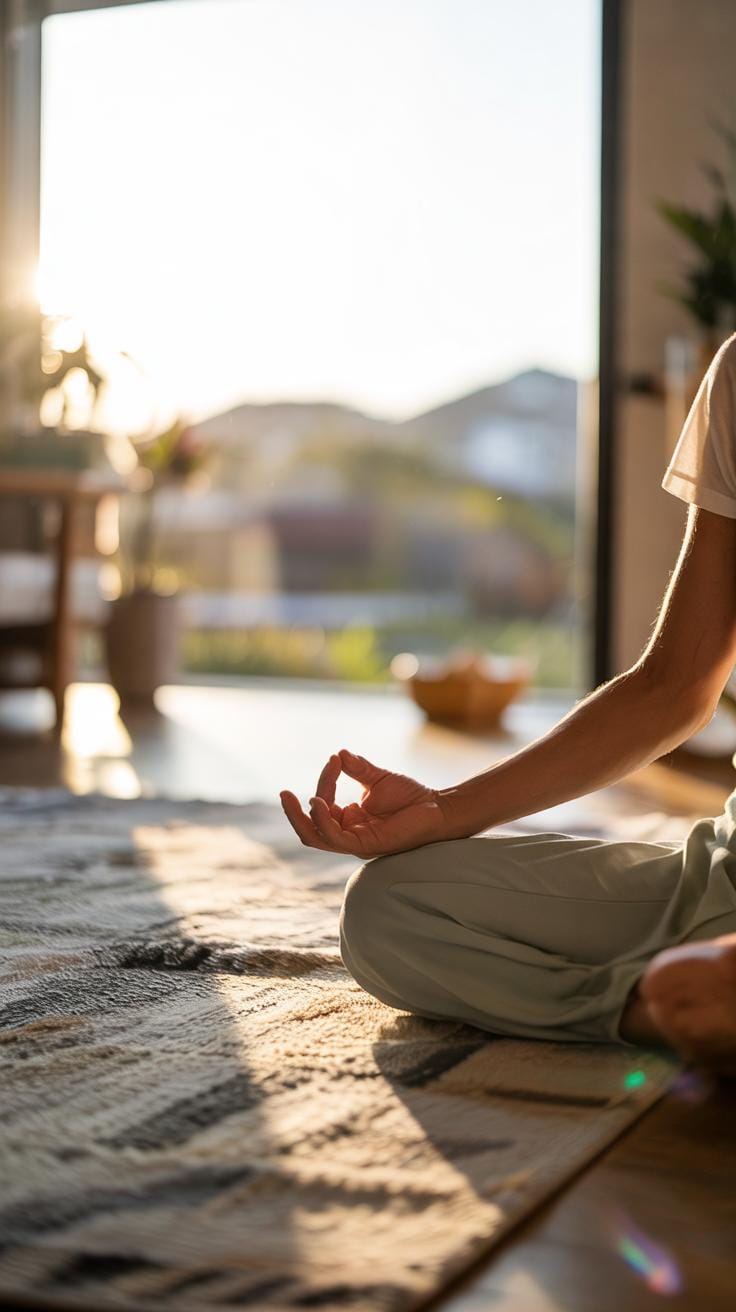Introduction
Minimal house design helps you live with less, making your space feel open and easy to use. It takes away extra stuff that fills your home, so you only keep what matters. A minimal home feels calm. It can save money and time in cleaning and organizing. When you focus on the essentials, you create a home that supports how you live. Imagine a home without clutter blocking your way or filling your eyes. Minimal design gives you this kind of freedom.
Designing a minimal house means choosing simple shapes, clean lines, and useful furniture. It’s not just about looks; it’s about making your life easier. This style has roots in a long history of art and architecture that focuses on simplicity and function. Using minimal design ideas, your home becomes a place you want to come back to at the end of every day. You gain space and peace of mind. This article shows you how to bring minimal house design into your life and enjoy clutter-free living.
Understanding Minimal House Design
Minimal house design focuses on creating spaces that feel open, simple, and functional. It emphasizes using only what is necessary to serve a purpose, avoiding excess decoration or complicated layouts. This style aims to make your home easier to live in by reducing clutter and distractions. The design helps you see clearly, move freely, and experience calmness in your living environment.
Minimal house design stems from modern architectural movements that prioritize practicality and clarity. It often combines clean shapes with useful features, so every part of your home has a reason to exist. Instead of filling spaces with things, it encourages thoughtful choices about what stays. This approach blends simplicity with utility, making your home a place that feels both peaceful and efficient.
How can your home change when you focus only on essentials? Minimal house design asks you to rethink what “enough” really means. It invites you to build a home that supports your daily life without extra noise or clutter.
Origins and Evolution of Minimal House Design
The roots of minimal house design stretch back to the mid-20th century with the Minimal Traditional style. This style appeared after World War II when many people wanted affordable, simple homes built quickly. Instead of ornate decorations common in earlier styles, Minimal Traditional houses featured straightforward forms and clean lines.
These homes focused on practicality. Small yards, compact layouts, and reduced exterior details made houses easier to build and maintain. The goal was to create functional spaces that met essential needs without extra costs. This mindset laid the foundation for today’s minimal design approach, which values simplicity as a tool for lasting comfort and usability.
As you reflect on your living space, ask yourself: Does my home reflect clear purpose like those Minimal Traditional houses? Could returning to simpler design ideas improve how I use my space?
Key Characteristics of Minimal House Design
Minimal house design uses several key features that help create clutter-free living. Clean lines define the structure, cutting out unnecessary shapes or details. You see flat surfaces and simple forms, which keep rooms looking open and easy to navigate.
Limited ornamentation also plays a role. Decorations are kept to a minimum so your attention stays on the space itself, not on busy patterns or too many objects. Functional spaces are laid out carefully, with each area having a clear use. This means fewer distractions and more room to move comfortably.
For example, built-in storage helps hide items from view, keeping surfaces clear. Open floor plans connect living areas without crowding. These choices prevent clutter from building up and make daily chores simpler.
When you design with these characteristics, ask: How much do I really need? What can I remove without losing function? Your answers will guide you toward a home that feels both practical and peaceful.
Principles of Minimal Design in Your Home
Minimal design builds an environment where every item has a reason to be. The goal is to organize your space by limiting distractions and focusing on essentials. This approach promotes calm and order by reducing clutter and visual noise. You create zones with clear purposes, helping daily tasks flow smoothly. Consider how light, color, and texture can support simplicity without overwhelming your senses. When you choose storage, aim for it to be out of sight, keeping surfaces clean and open. Walls, floors, and furniture should work together to maintain balance and freedom in the room. Ask yourself if each piece adds value or function to your daily life. When everything serves a role, your home feels clear and welcoming.
Less is More Approach
Think about the items you truly use and love. Keeping just these essentials frees up space and makes your home feel larger. Too many belongings confuse your eyes and mind, leading to stress. Removing extras means you spend less time tidying and more time enjoying your surroundings. What could you live without for a week? That question helps identify what belongs. Open areas invite movement and light, making rooms feel breathable. By choosing quality over quantity, you avoid crowding your space with items that collect dust. Less is more is not about bare walls but about making room for what matters.
Functional and Simple Furniture Choices
Furniture should support your lifestyle without overwhelming the space. Select pieces that serve multiple roles, like a sofa bed or a storage ottoman. Simple designs with clean lines blend into the background instead of dominating the room. Solid shapes and neutral colors keep the look calm and cohesive. Avoid overly ornate or bulky items that break the flow. If you enjoy hosting, think of stackable chairs or fold-away tables to expand space only when needed. The right furniture helps keep your floors clear and your life easier. Ask if your furniture works as hard as you do.
Creating Space Through Decluttering
Sorting your belongings helps you see what truly adds value to your life. Start by asking if an item has a clear purpose or brings you genuine joy. If it doesn’t, consider letting it go. This simple standard prevents unwanted clutter from accumulating.
Organize items by category, not just location. Group similar things together, like books, kitchen tools, or clothes. This makes it easier to decide what to keep and what to pass on. Avoid keeping duplicates unless they are necessary.
Use small boxes or bins for loose items and label them clearly. When you store things where they belong, you reduce the chance of things piling up on surfaces.
Think about how often you use something. Store daily items within easy reach. Move seasonal or rarely used items to less accessible places to keep your everyday space open and functional.
Steps to Reduce Clutter
Start with one room to avoid feeling overwhelmed. For example, begin in the kitchen. Empty a drawer or cabinet and sort items into keep, donate, or trash piles. Repeat this process throughout the room.
Next, move to spaces where clutter gathers, such as living rooms or bedrooms. Take it shelf by shelf or drawer by drawer. Focus on what you really need for daily life.
Create a rule to touch each item only once during sorting. This helps avoid second-guessing and speeds up the decluttering process.
Set a deadline for each room’s decluttering task. Short, focused sessions often yield better results than long, tiring efforts.
Smart Storage Solutions
Choose storage that blends with your home’s design and keeps items hidden from view. Drawers with dividers can organize small objects like office supplies or kitchen utensils neatly.
Use baskets or boxes on shelves to group similar items. This stops visual chaos and makes it simpler to find what you need without exposing every item.
Wall-mounted shelves or hooks free up floor space and keep things accessible but out of sight. Consider under-bed storage for out-of-season clothes or extra bedding.
When your storage looks tidy and intentional, your space feels calmer. Question how each storage area serves your daily routine and adjust to keep only what fits that purpose.
Choosing the Right Colors and Materials
Choosing colors and materials affects how open and calm your home feels. Colors can expand or shrink a room visually, while materials set the mood and define the style of your space. When you select the right combination, each area becomes clear and peaceful, helping you maintain a clutter-free environment.
Think about the rooms in your home. Do they feel cramped or inviting? Using soft colors and natural materials can create a sense of flow. This helps your space appear larger and easier to live in without distractions from too much stuff. How can your choices in colors and surfaces support simplicity and order in your daily life?
Consider how emotions respond to colors and textures. Cooler hues often calm your mind. Wood or stone bring in grounding, tactile qualities. Your choices invite you to slow down and enjoy your home’s design. Focusing on these details supports the minimalist goal of making your space open, simple, and functional.
Neutral and Light Color Palettes
Light and neutral colors make rooms appear larger and more peaceful. Whites, beiges, soft grays, and pale pastels reflect more light, helping the walls seem to stretch further. They create a blank canvas that lets you focus on the function of your space rather than on visual noise.
Using these colors on walls, floors, and furnishings minimizes distractions. You feel less overwhelmed because your eyes have fewer places to rest. Neutral shades also pair easily with accents if you want subtle color. Ask yourself what feelings these tones bring up for you. Do they help you relax and focus?
If you’re choosing paint or textiles, test samples in different types of daylight. Colors can look very different in sunlight versus artificial lighting. Aim for soft hues that invite calm and make your space feel airy. The goal is a seamless backdrop for your everyday living.
Natural and Durable Materials
Materials like wood, stone, and metal support a clean, timeless look in minimal homes. These elements add texture and interest without clutter. Wood warms a room and feels organic. Stone introduces durability and a sense of permanence. Metal adds sleekness and sturdy lines.
Select materials that age well and require little upkeep. For example, oak wood floors or granite countertops last many years and resist wear. You avoid replacing items often, which reduces clutter and waste. Do the surfaces you choose complement your lifestyle and values?
Combining these materials thoughtfully creates harmony in your space. They offer contrast without chaos. When you touch a slab of polished stone or run your hand over smooth wood grain, your home feels more real and grounded. These qualities keep your space simple but never cold or empty.
Lighting and Windows for Open Feelings
Maximizing Natural Light
Your home’s sense of openness grows when sunlight fills the rooms. Large windows work best to bring in natural light. Floor-to-ceiling windows or wide sliding glass doors let sunshine pour in freely. Choose window treatments that do not block light, such as sheer curtains or simple blinds. Avoid heavy drapes that create shadows and close off spaces. Position mirrors opposite windows to reflect light deeper into the room. This spreads brightness and enhances the airy atmosphere. Think about the direction your windows face to catch the sun during key hours of the day. How can you arrange your furniture to keep windows clear and let light flow in without obstacles? Let natural light become part of your minimal design by keeping window areas clean and open.
Simple and Effective Light Fixtures
Lighting fixtures should blend with your minimal style and serve a clear purpose. Choose straightforward shapes and neutral tones that do not draw too much attention. A single pendant light with a clean design can illuminate a dining area without cluttering the space. Recessed lighting works well to brighten rooms subtly and evenly. LED strip lights under shelves or cabinets add useful light without bulk. Avoid overly ornate chandeliers or multiple layers of lighting that confuse the eye. Practical designs support daily activities—reading, cooking, relaxing—while keeping your space calm. Ask yourself which lights you use most and select fixtures that meet those needs simply. Keeping lighting functional and minimal helps maintain a clutter-free environment all day and night.
Maintaining Minimalism in Daily Life
Mindful Consumption and Ownership
Every item you bring into your home affects your space. Before making a purchase, ask yourself if it serves a real purpose or brings you joy. Consider how often you’ll use it and if it fits your lifestyle. Avoid buying items just because they are on sale or look appealing but lack function.
When you find things you no longer need, let them go. Donating, selling, or recycling can free up space. Holding onto unused belongings creates clutter and blocks the open feel minimal design aims for. How often do you check your possessions? Creating a habit of reviewing and removing things can keep your home light and comfortable.
Routine Cleaning and Organizing
Set small, regular tasks to stay on top of clutter. Spend five to ten minutes a day tidying up a specific area. For example, clear kitchen counters each evening or organize your workspace weekly. This prevents mess from piling up and becoming overwhelming.
Use simple organizing tools like baskets or bins to assign places for your items. When everything has a home, you can quickly see what belongs and what needs attention. Regularly sort through belongings to maintain clear surfaces and open areas.
How can you fit quick tidying into your daily routine? Simple habits make a big difference in keeping your home functional and inviting.
Designing Multifunctional Spaces
Creating rooms that work for more than one purpose is key in a minimal home. When space is limited, each room should do double duty. A guest room can also be an office with a simple fold-out desk or a sofa bed. This keeps your home flexible without adding clutter.
You can turn a dining area into a workspace by using a table with easy-to-move chairs. Does your living room need to be a workout zone too? Use a corner for exercise mats that tuck away when not in use. Choosing practical pieces that fit your lifestyle helps you avoid overcrowding your space.
Ask yourself what activities you need to fit into your home. Then think about how one room can support those needs throughout the day without feeling crowded or overwhelming your space.
Flexible Furniture and Layouts
Furniture that changes shape or size helps you keep rooms clear. Folding tables, stackable chairs, and sleeper sofas allow you to switch roles quickly. This means you use less furniture overall and keep the floor open.
Open floor plans support flexibility too. Without many walls, a room can flow easily from one function to another. This creates a sense of space even in small homes. You can rearrange furniture as your needs change from day to night.
Think about pieces that serve several jobs. Can your coffee table store books or double as a desk? Choosing adaptable furniture saves room and keeps your space feeling spacious.
Zoning and Defining Areas Without Walls
Divide your space without walls by using rugs, lighting, or furniture placement. A rug under the dining table marks the eating area while leaving the rest of the floor clear. Different lighting styles, like a bright lamp for reading or a soft pendant for dining, create zones without barriers.
Positioning furniture can also form natural boundaries. A sofa backs up to a kitchen island, setting apart the living room. Open layouts gain clarity and function when areas feel separate but open.
Try these ideas to keep your minimal home organized and easy to move through. How can you use these simple tools to create zones that fit your daily life while keeping your space open?
Benefits of Living in a Minimal House
Minimal house design changes how you live every day. When your home is clear of extra stuff, it creates space for the things that matter. You don’t just gain more room; your mind feels less crowded, too. This can lead to better focus on work or hobbies because fewer distractions make it easier to stay on task.
Your lifestyle becomes simpler. Cleaning and organizing take less time, giving you more free hours. A minimal house also helps you build habits around mindful choices—like buying only what you really need. This habit supports better mental health and brings calm to daily routines.
Environmental benefits come from using fewer resources. Minimal living reduces waste and energy use, which helps the planet. These changes also cut costs on bills and unnecessary purchases. Can your home serve your needs while shrinking your impact on the world?
Improved Well-being and Focus
Your home reflects your mind. When clutter disappears, stress often drops too. A clutter-free space makes it easier to think clearly and plan your day. This can boost productivity and calm your nerves.
Imagine starting each morning without rushing to find your keys or important papers. That feeling saves time and energy. You can use that extra focus on your goals or relationships instead. How would having this kind of mental space change your daily life?
Simple surroundings support better sleep and relaxation. A clean, organized space signals your brain to rest. This improves your overall well-being and helps you wake up refreshed.
Environmental and Financial Savings
Minimal living means using less stuff, and that saves natural resources. When you buy fewer things, you create less waste. This lowers your household’s harmful impact on the environment.
Energy use often drops in smaller, simpler homes. Fewer rooms and fewer things to power can mean lower electricity bills. You also spend less money because you focus on what’s essential, not what’s trendy.
Think about the cost of storage, repairs, and replacements. When you own fewer items, those expenses shrink too. Could you redirect what you save to experiences or debt reduction?
Living minimally challenges how we think about wants and needs—what if less truly means more—for your wallet, your mind, and the earth?
Conclusions
Living in a minimal house helps you clear both space and mind. By removing clutter and choosing only what you need, your home feels larger, calmer, and more comfortable. Simple design choices can add function and beauty without extra stuff getting in the way. As you make these changes, you find new ways your home works better for you. You spend less time cleaning and more time enjoying your space.
Clutter free living is more than just a style. It changes how you think about your home and what you own. A minimal house supports your daily life and grows with you. It helps you focus on what really matters. Think about how your home makes you feel. Use these design ideas to create a space that feels right for you and your lifestyle. Your minimal house can be a place of peace, order, and clear purpose.


